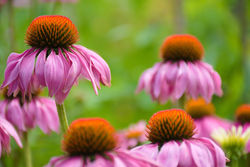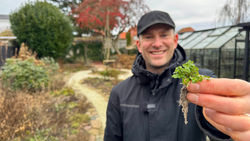7 must-haves for seed-starting success
- Lars Wildes
- Jan 10, 2023
- 4 min read
Updated: Jan 28, 2023
Whether it’s your first time growing flowers from seeds or you’re a perennial-flower pro, this list of supplies and gardening equipment will set you up for flower abundance year after year.
When should you start seeds?
It’s recommended to start seeds indoors around 2-3 months before the last frost date. Usually December or January for most parts of the globe.
Starting them early means you’ll have transplants strong enough to plant in your garden once the danger of frost is gone. These transplants will grow into mature plants faster and be better able to handle the warm temperatures coming in spring and summer.
Here’s all of the equipment you need to start sowing seeds indoors:
Seed starting trays
Plastic covering (any type of transparent plastic will work)
Seed-starting soil
Tongue depressors (popsicle sticks) to make labels
Small spray bottle for misting seedlings
Seeds
Sunlight (it’s not really ‘equipment’, but you’ve got to have it to grow seeds)
New to growing your own flowers from seed? Read our beginner guide to seed starting here first.

Supplies needed to start seeds inside
1. Seed starting trays or containers

Seeds can be sown in pretty much any type of container. Just make sure that it’s not too big and that it has drainage holes in the bottom.
Start with something small like a seed starting tray or a plastic meat tray. Go for around 2” (5 cm) deep in each cell (the little ‘cups’ in the seed trays) and move to larger trays and containers as the seedlings grow.
You can start seeds in plastic trays, peat pots, toilet paper rolls and even recycled plastic pots from the plants you bought at the nursery last year.
I use plastic meat trays that I wash and dry before use. They’re the perfect depth (around 2 inches/5 cm) and it’s easy to pop a few holes in the bottom for drainage.
Plus, it keeps them out of the trash — a win for the planet, too.
2. Clear plastic to cover the trays
Covering your trays with clear plastic keeps the soil moist and the air warm and humid to help your seeds germinate, all without blocking sunlight.
A lot of store-bought trays come with a plastic lid or dome that snaps on and doesn’t lay flat on top of the growing plants.
If you’re using clear sandwich bags or plastic wrap, make sure that you provide enough space between the plastic and the soil. You can keep it from touching by using popsicle sticks or toothpicks around the edges of the tray.
3. Seed sowing soil

Always buy soil designed specifically for seedlings — not potting soil.
Seeds need light, fluffy soil to germinate. Check with your local nursery or planting center for the best soil to start with.
You can also make your own seed-starting soil using a blend of quality soil, perlite or vermiculite, and peat moss.
4. Labels or plant markers

Forget buying plastic plant markers to label your seed starts. Use popsicle sticks (tongue depressors) instead.
Be sure you write the name of the plant as soon as you bury the seeds — it’s super easy to forget what is what when all you see is soil.
A great tip is to also add the date. That way you can keep an eye on when your little plants should have sprouted… and see if you need to start over or not.
5. Spray bottle

Moisture is super important for your growing seeds. You want them to stay moist, not wet. That’s why I recommend using a spray bottle.
Compared to a watering can, it’s pretty hard to overwater with a misting bottle.
Depending on how much humidity is under your plastic cover, you may need to water once a day or every other day.
6. Seeds

Choosing the seeds you want to plant is the fun part.
Some seeds need to be soaked in water before they can be planted. This is to help with the hard shell they have. Check with your local garden center or drop me a line if you have any questions about what seeds will work in your garden.
7. Sunlight
You need a warm, south-facing window. This gives the seeds enough light and warmth but not so much that they’ll get sunburned by constant direct sunlight.
If you don’t have enough light, or if your window isn’t southern-facing, you may need to look for a professional grow light.

There's something deeply satisfying about watching a small seed grow into a mature plant, and the process is simple enough for anyone to try. All you need is the basic supplies above, a bit of time and patience, and a little bit of know-how.
Whether you have a large backyard or a small windowsill, there's always room to grow something new and beautiful. Gardening is also a great way to improve your physical and mental health, and it's a wonderful hobby that can be enjoyed by people of all ages and abilities and kids, too.
Ready to give it a try? Let me know what you’re growing in the comments below.






Comments